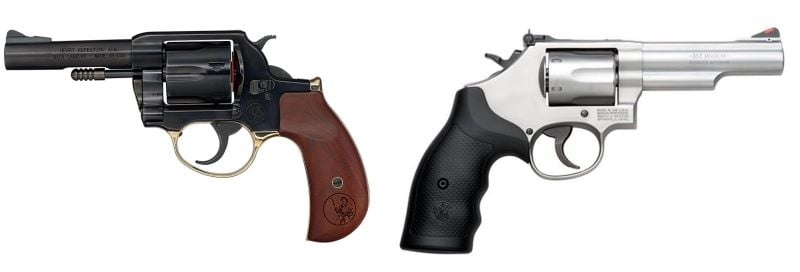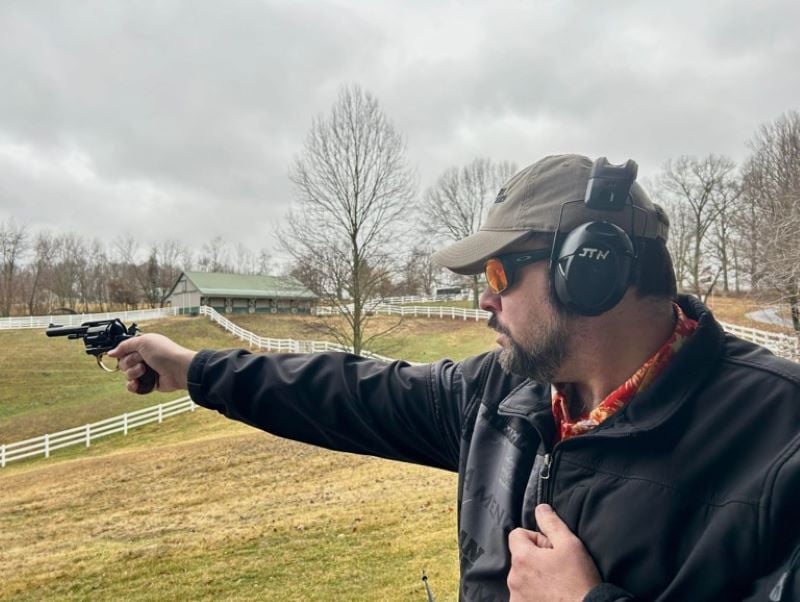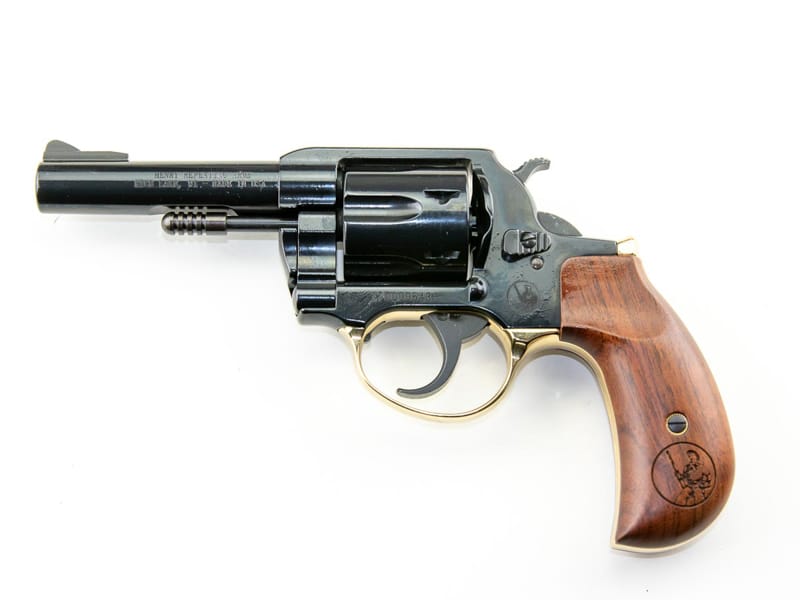I have rarely used revolvers as defensive handguns as I was raised on the advantages of the semi-automatic and have continued that preference to this day. I am not questioning those who prefer revolvers, as we each have our personal expectations for a defensive handgun; it is just that revolvers do not tick off all the boxes on my requirements list.
This preference is also clearly observable when we look at yearly sales of revolvers versus semi-automatics since the mid-1980s.
The Switch from Revolvers to Semi-Autos
Based on the ATF-mandated reporting of handguns manufactured in the U.S. each year, we can track the decline in revolvers over the last 30+ years. In 1986, revolvers topped semi-autos at 761,000 revolvers to 663,000 semi-automatics. In 1996, the tables flipped, and semi-autos topped revolvers at 988,000 semi-automatics to 499,000 revolvers. By 2006, semi-autos had widened the gap at 1,021,000 semi-automatics to 385,000 revolvers. Finally, in 2016, the gap had widened further, with 4,720,000 semi-automatic handguns towering over a production of 856,000 revolvers.
Revolvers have remained stable since 2016, accounting for 14% to 16% of all handguns manufactured, but almost half (43%) were chambered in .22LR.

A U.S. Justice Department report from 1978 reported that semi-automatics were inferior to revolvers for policing. A similar report in 1991 found the exact opposite, strongly encouraging police departments to switch to semi-automatics for policing. In a 2013 survey of the largest U.S. police departments, 73% reported their officers only carried semi-automatics, and 27% reported their offices carried both semi-automatics and sometimes as personal or backup weapon revolvers. No department reported only using revolvers.
This shift in U.S. policing to semi-automatics was driven by many factors, including criminals’ continued adoption of semi-automatics, their increased capacity and reliability, and the subsequent reduction in their cost.

The data clearly shows the impact of the polymer striker-fired revolution of the late 1980s. Though revolvers are still a part of the self-defense world, it is becoming clear that in many cases, they are being produced and purchased for other reasons, such as collecting, target shooting, and, in the case of .22s, likely plinking.
Henry’s New Revolver: The Big Boy Revolver in .357 Magnum
This begs the question: why do I keep acquiring revolvers? Though I doubt I will ever use them as defensive tools, I have always been fascinated by their simplistic function, history, and part of American lore. Thus, I was already interested when I found out Henry was planning to release their first revolver after a proven history of producing a wide variety of lever-action rifles.
I will admit I was surprised that Henry’s first revolver would not be a single-action only (Old West) revolver and would instead be a more modern single-action/double-action (SA/DA) revolver. This focus on the single-action-only market resulted in a little sticker shock when the Big Boy revolver in .357 Magnum/.38 Special was made available in 2023.

Objective Review: Henry Big Boy Revolver in .357 Magnum / .38 Special
The Henry Big Boy revolver comes in two different grip styles (both in American walnut). The first is the Birdshead grip, mirroring several handguns of the Old West and perhaps allowing for better concealment. The second option is the more traditional Gunfighter squared grip, which allows for better grip and control. The overall size and weight are slightly lower than many other comparable six-shot .357 Magnum revolvers, and the finish and grips harken back to the six-shooters of the great American West. The Big Boy revolver is a medium frame with a quick-release cylinder.
Though a modern SA/DA revolver, the gun uses a traditional notch-style rear sight and a simple post front sight. While the sights are fixed and non-adjustable, the revolver does come with two alternate height posts that can be easily switched out to better match the point of aim to the point of impact. The trigger is smooth in either SA or DA mode, with a trigger pull in DA mode of 7.85 pounds and in SA mode of 2.2 pounds. In both modes, the trigger is consistent with a clean break.

Subjective Review
I love the overall look and feel of this revolver. The heavily polished blued steel frame and cylinder are perfectly set with the brass trigger guard and grip frame. The Henry logo is engraved on the left side frame behind the trigger and on the left and right wooden grips. Overall, the look and feel capture a piece of American history while providing a smoothly functioning double-action revolver.
Personally, I think the handgun is well-balanced and presents quickly to the eyeliner, using either a one-handed or two-handed grip. I would prefer different sights than the single black post front sight and the notched back, but they are easily sufficient for shooting lighter or brighter targets on a well-lit range. Overall, this revolver is a joy to shoot, and though I might have appreciated the larger grip surface of the Gunfighter model, I love the look of the Birdshead grip.
Conclusion
Outside of collecting and target shooting, I am not sure about the market for the Henry Big Boy revolver. Still, within those categories, it is a fine addition to a collection of revolvers. It is likely unfair to compare it to revolvers that are intended as potential everyday carry guns. If you are looking for a great-looking yet still functional DA revolver with a flair for history, there is a lot to love in this revolver. If you want a reliable .357 Magnum as a defensive firearm, there are likely better choices on the market.


